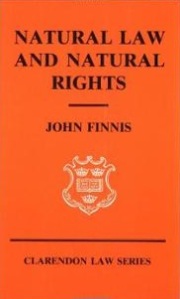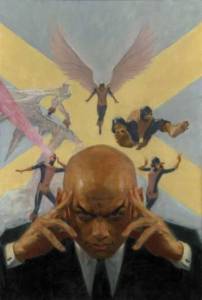The Question of Horror
I’ve never been fond of the horror genre. I just don’t see the point of being scared or (more often) disgusted or repelled by a story. As Randall Munroe of xkcd puts it: “I know everyone’s into what they’re into, but I have never understood horror movies.”
Approaching the genre as an outsider, then, my question is: why is there such a genre at all? Is it just the desire for a thrill? Or is the whole interest in horror merely morbid?
An interesting remark in a Diane Duane story recently gave me an inkling of what the function of horror stories might be. As we’re coming up to Hallowe’en, I thought the point might be worth examining this week.
Horror, and Genre Horror
 To be sure, one sometimes bumps up against horror elements incidentally in the course of pursuing other types of stories. I did watch the movie Alien when it came out in 1979—but that was because it was science fiction, not because it was horror. It’s both—I recall coming out of the theatre literally shaking. But I don’t think I’ve watched it a second time.
To be sure, one sometimes bumps up against horror elements incidentally in the course of pursuing other types of stories. I did watch the movie Alien when it came out in 1979—but that was because it was science fiction, not because it was horror. It’s both—I recall coming out of the theatre literally shaking. But I don’t think I’ve watched it a second time.
In a similar way, there’s a good admixture of horror in Jurassic Park (I’m thinking mainly of the 1993 movie). Plenty of “jump scene” shock moments, and gore; and I have rewatched that one, but it’s for the other elements, most notably the sheer wonder of seeing the paleontologists encounter actual living dinosaurs. As the xkcd comic mouseover observes, I enjoy it because dinosaurs are cool. I’m willing to go through a good deal of bad stuff in a story if the good stuff makes it worthwhile.
Even a nice song can turn up unexpected horror elements. The title song from Carole King’s Tapestry album is a lovely meditative piece that begins “My life has been a tapestry of rich and royal hue . . .” Pleasant, yes? But the lyric gradually drifts into a dream, or maybe a nightmare: the end of the song gives us “. . . A figure, gray and ghostly, beneath a flowing beard / In times of deepest darkness, I’ve seen him dressed in black / Now my tapestry’s unraveling, he’s come to take me back . . .” That’s rather disturbing, though the song is so pretty that one hardly notices the rather dreadful image.
 But what little I have seen of genre horror makes clear that it has its own conventions, its own tendencies and interests, that go beyond these occasional elements. I recognized this when I read Stephen King’s novel The Stand (1978). While the story is essentially a fantasy, it has a science-fictionish premise: an apocalyptic pandemic that wipes out most of humanity. So I approached it as an SF novel.
But what little I have seen of genre horror makes clear that it has its own conventions, its own tendencies and interests, that go beyond these occasional elements. I recognized this when I read Stephen King’s novel The Stand (1978). While the story is essentially a fantasy, it has a science-fictionish premise: an apocalyptic pandemic that wipes out most of humanity. So I approached it as an SF novel.
Some characters are escaping from New York City (if I recall correctly) through a tunnel jammed with stopped vehicles, which are occupied by the decomposing bodies of plague victims struck down at the wheel. Not a pleasant place for a trek. So they enter the tunnel, are appropriately horrified by this commuter charnel house. They continue on. And on. And on. And at some point I found myself wondering, why are we still in this tunnel? I get the point. Why aren’t we moving forward with the plot? And it dawned on me: that’s the SF reader’s reaction. But this is horror. The dreadful experience of going through the tunnel is the whole point for a horror reader.
Similarly, in Weird Tales-type stories like ”Shambleau” and others of C.L. Moore’s early work, it seems clear that the horror elements are the purpose of the story. And it’s a durable purpose. There’s still a thriving cottage industry of pastiches, games, and academic interest in H.P. Lovecraft’s Cthulhu Mythos stories, though Lovecraft has been dead since 1937. (At least, we think he’s dead . . .)
Science Fiction Monsters
 On the other hand, compare this with an SF story that merely has horror elements. There’s a sizable subgenre of science fiction monster stories, even if we throw out the B-movies and Godzilla remakes. James H. Schmitz was particularly good at these. Take a look at his collection A Pride of Monsters: short stories like “The Winds of Time” (1962) and “Greenface” (1943) have structures very like traditional horror tales. And the excellent short novel The Demon Breed (1968) makes use of horror tropes in telling an intense adventure story.
On the other hand, compare this with an SF story that merely has horror elements. There’s a sizable subgenre of science fiction monster stories, even if we throw out the B-movies and Godzilla remakes. James H. Schmitz was particularly good at these. Take a look at his collection A Pride of Monsters: short stories like “The Winds of Time” (1962) and “Greenface” (1943) have structures very like traditional horror tales. And the excellent short novel The Demon Breed (1968) makes use of horror tropes in telling an intense adventure story.
But while “Greenface” may read as a horror story, Schmitz’s other monster tales don’t come across that way. There’s a difference in tone and mood. Even though there are fairly horrid suggestions in “The Winds of Time”—the (extremely intelligent) monster in that story “preferred . . . to have its snacks still wriggling-fresh as it started them down its gullet”—we don’t dwell on them. It reads to me more like an SF problem-story, where the characters must come up with inventive means to extricate themselves from a difficult situation.
Similar observations apply to, say, A.E. van Vogt’s assembly of monster-stories The Voyage of the Space Beagle (1938-1950)—or even van Vogt’s “Asylum” (1942), an early envisioning of science-fictional (as opposed to fantasy or religious) vampires. The tone and mood are different from those of a true horror tale; they’re appealing to a different audience.
The Appeal of Horror
Why do we include horror elements in a story?
The most obvious answer, from an F&SF perspective, is conflict. If we’re dealing with an epic or an adventure, we need to see that the evil our heroes are fighting against is, in fact, evil. And one easy way to do that is to show the bad guys doing horrible things. Maybe the threat is not merely death, but any of several Fates Worse Than Death. Not only bodily death, but the soul itself (the theology is a little murky here) is at stake. Not merely enslavement, but cannibalism. We accentuate the menace against which the main characters are striving by making it a “parade of horribles.”
More broadly, horror aids contrast. The good stands out better against a background of evil: we can more readily appreciate the good when it’s juxtaposed with the bad. When we return to the Shire, we appreciate it more than in the initial chapters, because we’ve seen far worse places. (Of course, Tolkien’s actual treatment of “The Scouring of the Shire” is more nuanced and complex than that simple contrast suggests—but the simple contrast still underlies the conclusion of the story.)
 In this connection, Darrell Schweitzer notes that Tolkien has an unexpected knack for horror writing (The Fantastic Horizon, ch. 2). The central concept of the Ring itself is pretty darn creepy: an innocent-looking but almost-sentient magic item that gradually subverts the wearer’s will. The Black Riders pursuing the hobbits through a seemingly-idyllic Shire—the night attack on Weathertop—the attack of Shelob at Cirith Ungol—Tolkien knows how to invoke the awful as well as the awesome.
In this connection, Darrell Schweitzer notes that Tolkien has an unexpected knack for horror writing (The Fantastic Horizon, ch. 2). The central concept of the Ring itself is pretty darn creepy: an innocent-looking but almost-sentient magic item that gradually subverts the wearer’s will. The Black Riders pursuing the hobbits through a seemingly-idyllic Shire—the night attack on Weathertop—the attack of Shelob at Cirith Ungol—Tolkien knows how to invoke the awful as well as the awesome.
But while these uses explain some horror elements in other kinds of stories, they don’t fully account for the horror genre. If the horrible is not set up as opposition or contrast, but rather as the main preoccupation of the story, it must be there for some other reason.
Immunization
 Diane Duane’s collection of three Young Wizards stories, Interim Errantry (2015) includes a 2011 Hallowe’en story, “Not In My Patch.” Early in the story, senior wizard Carl Romeo is talking to Nita, the main character, about the reason for elaborate Hallowe’en displays:
Diane Duane’s collection of three Young Wizards stories, Interim Errantry (2015) includes a 2011 Hallowe’en story, “Not In My Patch.” Early in the story, senior wizard Carl Romeo is talking to Nita, the main character, about the reason for elaborate Hallowe’en displays:
“But who doesn’t like being safely scared, occasionally? Pleasantly scared, by something that can’t really hurt you? . . . It starts getting you used to fear . . . so when you come up against something really scary, you can cope a little better.”
“Like being vaccinated,” Nita said. “The weakened bugs make you immune . . .”
This idea suggests a wholesome purpose even for stories that focus primarily on the horrible. The stories may not be quite as frivolous as the jack-o-lanterns and orange-and-black bunting that we see at this season. But we can still say to ourselves, “it’s just a story.” We expose ourselves to the scary or appalling in some degree without having to go through those experiences in real life. Because there are scary and appalling things in the world; and we don’t want to lead so sheltered a life that we’re wholly incapacitated or unmoored if we should meet them. As Nita says, it helps us develop an immunity.
 We can go even further. If we learn to laugh at horror, we can to some degree deprive it of its self-importance, place ourselves beyond it. (In the passage excerpted above, Carl notes that the Lone Power “really, really hates not being taken seriously”—a sentiment echoed to good effect at the end of Poul Anderson’s Operation Chaos.) Call it whistling in the dark—but this attitude may help prepare us, in some small way, for those times when we do encounter horror in real life. It may explain why our Hallowe’en decorations tend toward the ridiculous and cartoonish. “Here’s a witch no one could be afraid of.” (In this connection, I can’t resist citing to one of my favorite treatments of the Cthulhu Mythos.)
We can go even further. If we learn to laugh at horror, we can to some degree deprive it of its self-importance, place ourselves beyond it. (In the passage excerpted above, Carl notes that the Lone Power “really, really hates not being taken seriously”—a sentiment echoed to good effect at the end of Poul Anderson’s Operation Chaos.) Call it whistling in the dark—but this attitude may help prepare us, in some small way, for those times when we do encounter horror in real life. It may explain why our Hallowe’en decorations tend toward the ridiculous and cartoonish. “Here’s a witch no one could be afraid of.” (In this connection, I can’t resist citing to one of my favorite treatments of the Cthulhu Mythos.)
May you all have a happy Hallowe’en, then, and may all your fears be as abstract and hypothetical as the Great Pumpkin. “Forth now, and fear no darkness.”


















